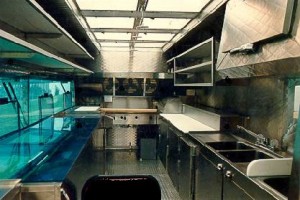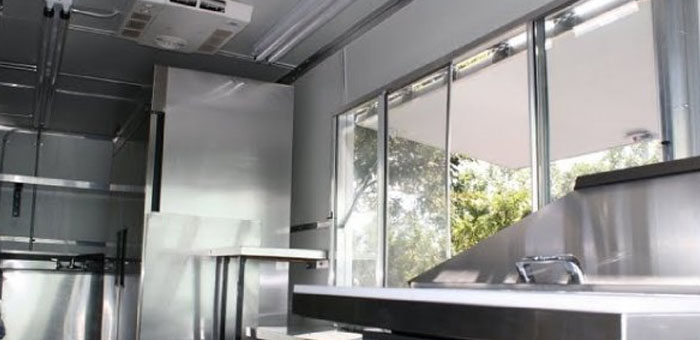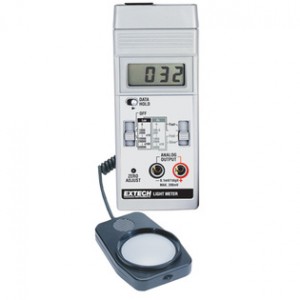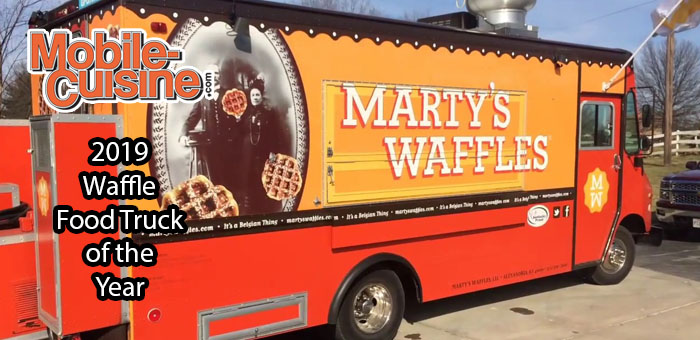An adequate and properly designed food truck lighting system is essential in a food truck kitchen for staff to efficiently do their tasks including cooking, cleaning and food preparation. The inside of the truck should be as free from glare and unwanted reflections as is practicable.
Food Truck Lighting Design Basics
The design of a food truck lighting system must take into account:
- available natural light
- required luminance levels (lux) for the tasks being performed
- reflectance of surfaces
A properly designed food truck lighting system within a mobile kitchen will help to reduce energy costs and improve the working environment for staff. In addition, electrical supply systems must comply with legal requirements. It is recommended that whether you are building or designing a food truck on your own or hiring a kitchen builder that the work be overseen by qualified electricians and designers to ensure compliance.
Natural and Artificial Lighting
 The relationship between natural and artificial lighting is important to consider when lighting the inside of a food truck. While artificial lighting will normally be the main source of light, it is desirable to include natural light sources. Ideally the service window and skylights should not be less than 10 percent of the total floor area of the truck’s kitchen.
The relationship between natural and artificial lighting is important to consider when lighting the inside of a food truck. While artificial lighting will normally be the main source of light, it is desirable to include natural light sources. Ideally the service window and skylights should not be less than 10 percent of the total floor area of the truck’s kitchen.
Windows and skylights allow light into a space, improving the staff working environment, however they can also be problematic as a source of glare. Careful consideration should be given to the positioning of these openings and the interaction between natural and artificial light levels.
The recommended illuminance level for a food truck kitchen is similar to a commercial kitchen’s areas for food preparation, cooking and washing and thus the luminance should be 240 lux.
Reflectance
Interfering reflections and glare can cause reduced visibility and become a source of distraction and annoyance for your food truck kitchen staff. Light will reflect off walls, ceilings, floors and work surfaces. Therefore, the color, material and type of finish of these surfaces should be carefully considered. The reflectance from these surfaces contributes to the overall luminance level of the inside of the food truck. Taking these considerations into account will result in good visibility conditions.
Ceilings occupy a substantial amount of the field of view. For larger trucks where there is indirect light penetrating the space, it is advisable to render the ceiling white or near white. The ceiling should have a reflectance level as close to 70 percent as possible.
Wall reflectance is important even though its contribution to the distribution of light is small. A high gloss finish creates glare, causing staff discomfort and fatigue.
For surfaces below eye level such as bench tops and floors, non-glossy finishes are recommended.
The colors and finishes should be selected in the food truck kitchen taking into account the contrasts between surfaces. For example, there should be a difference between the bench and wall. Finishes should not provide glare. But provide enough reflective light for the food truck staff to safely and effectively carry out their tasks.
Light Fixture Considerations
Light fixtures need to be installed in such a way that will not contribute to food contamination. They should also be designed and installed in a way that facilitates ease of cleaning. Fixtures should be recessed (if possible) or surface mounted on ceilings. Due to the lack of height within a food truck, it is typically not an option to suspended light fixtures.
Properly designed diffusers should be installed to assist with even distribution of light and contain glass fragments in the event of a lamp shattering.
Environmental Considerations
Reduce energy consumption through lighting in a food truck kitchen. Make sure to consider the following in the selection of lighting elements:
- for new lighting select T5 or CFL fluorescent lamps with electronic ballasts (Wikipedia: lighting design fixture formats)
- use T5 or CFL fluorescent lamps in signage and menu boards
- in existing fluorescent fittings, re-lamp with triphosphor lamps and undertake re-lamping and cleaning programs on a regular basis
Follow the link to find even more information on food truck kitchen design.
The Bottom Line
Lighting design is often an afterthought when it comes to laying out a food truck. However, as we’ve shown, a number of factors are essential to food truck lighting design, Without careful planning, your truck can be unsafe to work in.
Do you own a vehicle in which you wish you could redo the food truck lighting design? If so, let us know the issues you’ve run into in your food truck lighting in the comment section below or on social media. Facebook | Twitter





